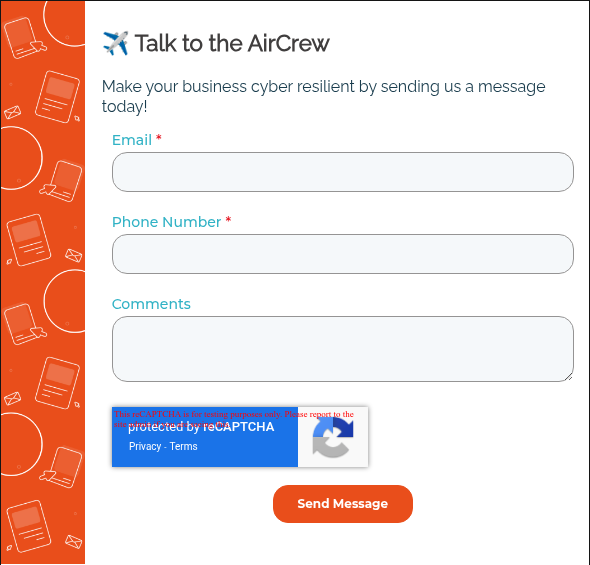AI implementations are failing at staggering rates.
Recent studies show that 80% of AI projects never make it to production, and those that do often get abandoned. The culprit isn’t the technology, though. It’s the strategy (or lack thereof).
Organizations are treating AI like any other software deployment: pick a vendor, run a pilot, roll it out. But AI doesn’t work that way:
- Models degrade over time
- Regulations shift
- Business needs evolve
- Competitors move faster
What worked six months ago becomes obsolete without a strategy built for adaptation.
Strategic implementation means your AI initiatives scale with your business, survive regulatory changes, adapt to technological advances, and actually deliver measurable ROI.
Below, we’ll walk through a framework for building an AI strategy that works today, tomorrow, and evolves with your organization and the technology itself.
What Is an AI Implementation Strategy?
An AI implementation strategy is a plan that defines how an organization will adopt, deploy, and scale artificial intelligence technologies to achieve specific business objectives. It covers everything from use case selection and data infrastructure to talent development, vendor partnerships, and long-term governance.
Most companies confuse an AI implementation strategy with an AI project plan. They’re not the same thing.
A project plan focuses on deploying a specific AI solution: building a chatbot, implementing predictive analytics, or automating a particular process. An implementation strategy is broader. It’s the framework that guides all your AI initiatives, guarantees they align with business goals, and creates the infrastructure needed for AI to succeed long-term.
Your strategy answers critical questions that individual projects can’t address:
- How do we prioritize which AI use cases to pursue first?
- What data infrastructure do we need before any AI project can succeed?
- How do we build internal AI capabilities versus relying on vendors?
- What governance structures prevent AI from creating more problems than it solves?
A future-proof AI implementation strategy goes deeper. It acknowledges that AI technology evolves rapidly, regulations change constantly, and business needs shift unpredictably. Rather than creating a rigid five-year plan, it builds in flexibility.
Your strategy should define principles and frameworks that remain stable while allowing tactics and technologies to adapt. It’s all about creating sustainable competitive advantages that compound over time as your AI capabilities mature.
Why Most AI Implementations Fail (And How to Avoid It)
AI failures rarely stem from technical limitations. The technology works. What doesn’t work is how organizations approach implementation.
Learning the most common failure points will help you avoid expensive mistakes that derail AI initiatives before they deliver value.
Lack of Business Alignment
Teams get excited about AI’s capabilities and start building solutions looking for problems. They deploy chatbots nobody needs, predictive models that don’t influence decisions, or automation that solves the wrong bottleneck. Without clear business objectives and stakeholder buy-in, AI projects become technology experiments that never translate to business impact.
Start with the problem, not the technology.
Poor Data Foundations
AI runs on data, but most organizations find too late that their data is incomplete, inconsistent, siloed across systems, or simply wrong. You can’t build reliable AI models on unreliable data. Teams waste months trying to make AI work with fundamentally flawed datasets.
The fix isn’t better algorithms—it’s better data infrastructure. Address data quality, governance, and accessibility before investing heavily in AI development.
Unrealistic Expectations
Leadership expects AI to work like magic: instant results, perfect accuracy, autonomous decision-making without human oversight. When reality doesn’t match the hype, they lose confidence and pull funding.
AI delivers value incrementally.
Models need training, refinement, and ongoing optimization. Set realistic timelines and success metrics from the start, and communicate what AI can and can’t do for your specific use cases.
Inadequate Change Management
Organizations deploy AI without preparing people for it. Employees don’t trust the outputs, don’t understand how to use the tools, or actively resist adoption because they fear job displacement. Technical implementation succeeds while business adoption fails.
AI only creates value when people actually use it.
Invest in training, communication, and addressing legitimate concerns about how AI changes workflows and roles.
Vendor Lock-In
Rushing into proprietary AI platforms or building custom solutions on vendor-specific infrastructure creates dependency. When you need to switch vendors, scale to new use cases, or integrate different AI systems, you discover you’re trapped.
Costs escalate and flexibility disappears.
Design for portability from the beginning—prioritize open standards, maintain data ownership, and avoid architectures that make switching vendors prohibitively expensive.
7 Must-Have Components of an AI Implementation Strategy
A successful AI implementation strategy requires multiple components working together. Miss one, and your entire initiative becomes vulnerable to failure, obsolescence, or wasted resources.
These components create a foundation that supports sustainable AI adoption and scales as your capabilities mature:
- Business Objectives and Use Case Prioritization
- Data Infrastructure and Governance
- Technology Stack and Architecture Decisions
- Talent and Skills Development
- Change Management and Adoption Planning
- Vendor and Partnership Strategy
- Measurement and Optimization Framework
1. Business Objectives and Use Case Prioritization
AI for AI’s sake burns budget without delivering results. Your strategy needs clear business objectives that AI will help achieve: reducing operational costs, improving customer experience, accelerating time-to-market, or identifying new revenue opportunities.
Map potential AI use cases to these objectives and prioritize ruthlessly. Not every use case deserves investment. Evaluate based on business impact, technical feasibility, data availability, and implementation complexity. High-impact, low-complexity projects make ideal starting points—they build momentum and demonstrate value quickly.
2. Data Infrastructure and Governance
AI implementation fails without solid data foundations. You need infrastructure that collects, stores, processes, and delivers data reliably at scale. This includes data warehouses, pipelines, quality controls, and integration between systems.
Establish clear ownership, access controls, quality standards, and retention policies. Define how data gets labeled, validated, and maintained. Document data lineage so teams understand where data comes from and how it’s been transformed.
Your data infrastructure must support GDPR, CCPA, industry-specific regulations, and evolving AI-specific requirements. Build consent management, data minimization, and audit capabilities into your foundation rather than bolting them on later.
3. Technology Stack and Architecture Decisions
Your technology choices determine flexibility, costs, and capabilities for years to come. Decide early whether you’ll build custom AI solutions, use pre-trained models, or leverage AI platforms and APIs. Each approach has trade-offs in control, speed, cost, and expertise required.
Architecture decisions matter enormously:
- Will you run AI workloads in the cloud, on-premises, or hybrid?
- How will AI systems integrate with existing applications?
- What MLOps tools will manage model development, deployment, and monitoring?
Choose architectures that support experimentation now and scale later without requiring complete rebuilds.
Design for modularity—components that can be updated, replaced, or repurposed independently. This flexibility lets you adopt new AI capabilities as they emerge without scrapping existing investments.
4. Talent and Skills Development
AI implementation requires skills most organizations don’t have internally—data scientists, machine learning engineers, AI architects, and specialists who understand both the technology and your business domain. You can’t hire fast enough to meet demand, and retention is challenging when competition for AI talent is fierce.
Build a talent strategy that combines hiring, training, and partnerships. Upskill existing employees in AI fundamentals so they can work effectively with AI systems even if they’re not building models. Identify roles that need deep technical expertise versus roles that need AI literacy.
Consider where you need permanent capabilities versus project-based expertise. Consultants and contractors can accelerate specific initiatives while your internal team develops core competencies.
For example, you can work with Airiam to maximize AI value and drive key business outcomes without hiring and training an in-house team.
5. Change Management and Adoption Planning
Technical deployment is only half the battle. AI changes how people work, what decisions they make, and which tasks they prioritize. Without deliberate change management, employees resist adoption, ignore AI outputs, or use tools incorrectly.
Start communicating early about what AI will do, how it affects different roles, and what benefits it brings. Address fears directly. Be honest about job changes while emphasizing how AI augments human capabilities rather than replacing them. People support what they help create, so involve end users in pilots and gather feedback that shapes implementation.
6. Vendor and Partnership Strategy
No organization builds everything in-house. You’ll rely on cloud providers, AI platform vendors, consulting partners, and specialized service providers. Your vendor strategy determines costs, capabilities, and how much control you maintain.
Evaluate vendors on more than features and pricing. Check their roadmap alignment with your needs, security practices, support quality, and exit options if the relationship doesn’t work. Negotiate contracts that protect your data ownership, provide flexibility to scale up or down, and include service level agreements with teeth.
Diversify where it makes sense. Depending on a single AI vendor creates risk when they change pricing, discontinue features, or fail to keep pace with technology advances.
7. Measurement and Optimization Framework
You can’t improve what you don’t measure. Define success metrics for AI initiatives before deployment—not just technical metrics like model accuracy, but business metrics like cost savings, revenue impact, customer satisfaction, or time savings.
- Build feedback loops that continuously improve AI performance.
- Monitor model drift, track prediction accuracy over time, and gather user feedback on AI outputs.
- Establish processes for retraining models, updating training data, and refining use cases based on real-world results.
- Create dashboards that give stakeholders visibility into AI performance and business impact.
Regular reviews identify what’s working, what needs adjustment, and when to sunset AI projects that aren’t delivering value.
Build Your AI Strategy with Confidence
AI implementation isn’t a one-time project—it’s an ongoing transformation that requires strategic thinking, careful planning, and continuous adaptation. The organizations winning with AI aren’t necessarily the ones with the biggest budgets or the most advanced technology. They’re the ones with strategies built to last.
The framework we’ve outlined gives you a starting point, but every organization’s AI journey is different. Your industry, maturity level, risk tolerance, and business objectives all shape what your strategy should look like.
Airiam helps organizations design and execute AI strategies that deliver results without creating unnecessary risk. Our team understands the intersection of AI technology, cybersecurity, compliance, and business operations. We’ve helped companies across industries build AI capabilities that scale sustainably.
Let’s talk about where you are and where you need to go.
Frequently Asked Questions
1. What is an AI implementation strategy?
An AI implementation strategy is a comprehensive plan defining how your organization will adopt, deploy, and scale AI technologies to achieve business objectives. It covers use case prioritization, data infrastructure, technology choices, talent development, governance, and measurement frameworks.
2. How long does AI implementation take?
Timeline varies based on scope and organizational readiness. Initial pilot projects typically take 3-6 months. Scaling AI across the organization is a multi-year journey. Organizations with strong data foundations and clear business objectives move faster than those starting from scratch.
3. What’s the difference between AI strategy and AI adoption?
AI strategy is the roadmap: the framework guiding all AI decisions and initiatives. AI adoption is execution: actually deploying AI tools and getting people to use them. Strategy answers “what” and “why.” Adoption addresses “how” and “when.” You need both for success.
4. How much should we budget for AI implementation?
Budgets range dramatically based on complexity, scale, and build-versus-buy decisions. Small pilot projects might cost $50,000-$200,000. Enterprise-wide implementations easily reach millions. Factor in technology costs, talent, infrastructure upgrades, change management, and ongoing optimization.
Got questions? We have answers.


